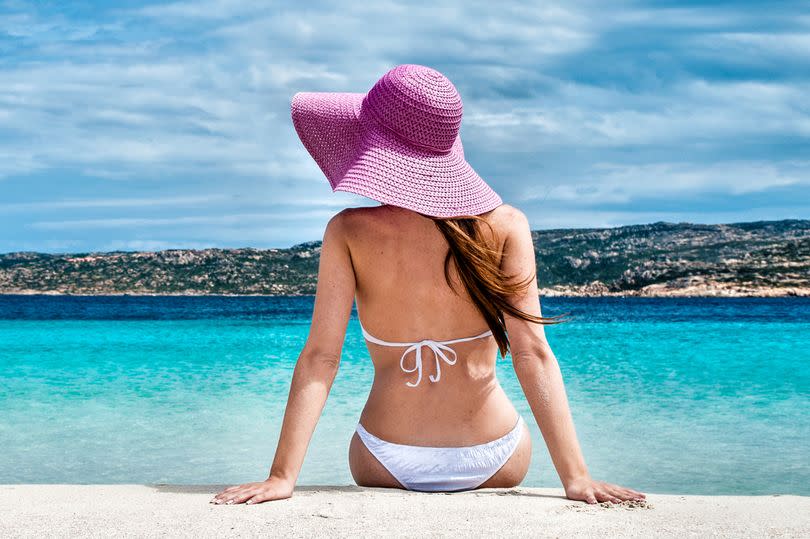Summer tanning trend poses serious health risks as experts share urgent warning

Influencers are touting a new secret ingredient for achieving the perfect tan - but experts aren't impressed.
As summer arrives, many Brits will be jetting off on holiday to soak up some much-needed sunshine. But experts now issued a stark warning against one dangerous online trend that's reportedly the focus of more than 43 million posts.
Termed the 'UV Index' remedy, this involves incorrect use of SPF and intense sun exposure - a nightmarish recipe for increasing the risk of cancer. Skincare gurus at Look Fantastic explained: "The UV (Ultraviolet Radiation) index is a scale from one to 10 that tells us how strong the sun is on any given day.
"Any UV rating in the range of 3-7 is classed as 'moderate' to 'high', and anything over 8 is 'very high' and can even be classed as dangerous... This is one of the reasons the latest TikTok tanning trend is so dangerous. A high UV Index coupled with improper SPF use is leaving many at risk of permanent skin damage reminiscent of the fallout of the 2000’s sunbed trends.
"These cancer-related consequences even led to the Australian Government banning the use of commercial tanning beds back in 2015."
Contrary to popular belief, UV isn't always determined by how sunny it is, as 90% of rays can still penetrate through clouds and cause sunburn, according to Cancer Research. Atmospheric ozone, the sun's elevation and even air pollution can impact an area's index too, which is viewable using the Met Office weather app.
At a time when melanoma skin cancer is claiming 2,000 lives in the UK every year, this has never been more important. Experts even suggest adding SPF to your daily routine. In a previous Mirror article, Pharmacist and 'skinfluencer' Angela Mavalla, also said: "Regular use of sunscreen has been shown to reduce the risk of developing skin cancers, including melanoma, squamous cell carcinoma, and basal cell carcinoma.
"The potential risks of sunscreen ingredients are minimal compared to the proven benefits of UV protection."
SPF - or Sun Protection Factor - is the amount of protection a cream can provide against ultraviolet B (UVB) - a type of radiation commonly linked to skin burns. Bottles of SPF usually rank this on a scale from two to 50+, with the latter offering the most protection overall.
Any displayed star rating will unveil a product's level of protection from ultraviolet A radiation (UVA) too, which is closely linked to aging, enlarged pores and fine lines. However, both UVA and UVB trigger an increased risk of cancer.
The NHS recommends using a sun protective factor (SPF) of at least 30 to protect against dangerous UVB rays and at least a 4-star UVA protection. It stresses there is no 'healthy way' to get a tan and encourages Brits to wear sun cream even when it's cloudy to protect against skin cancer.
Angela added: "Misinformation can spread rapidly, so it is important for healthcare professionals and knowledgeable content creators to provide accurate, science-backed content."
What do you think? Let us know in the comment section below

 Yahoo News
Yahoo News 
